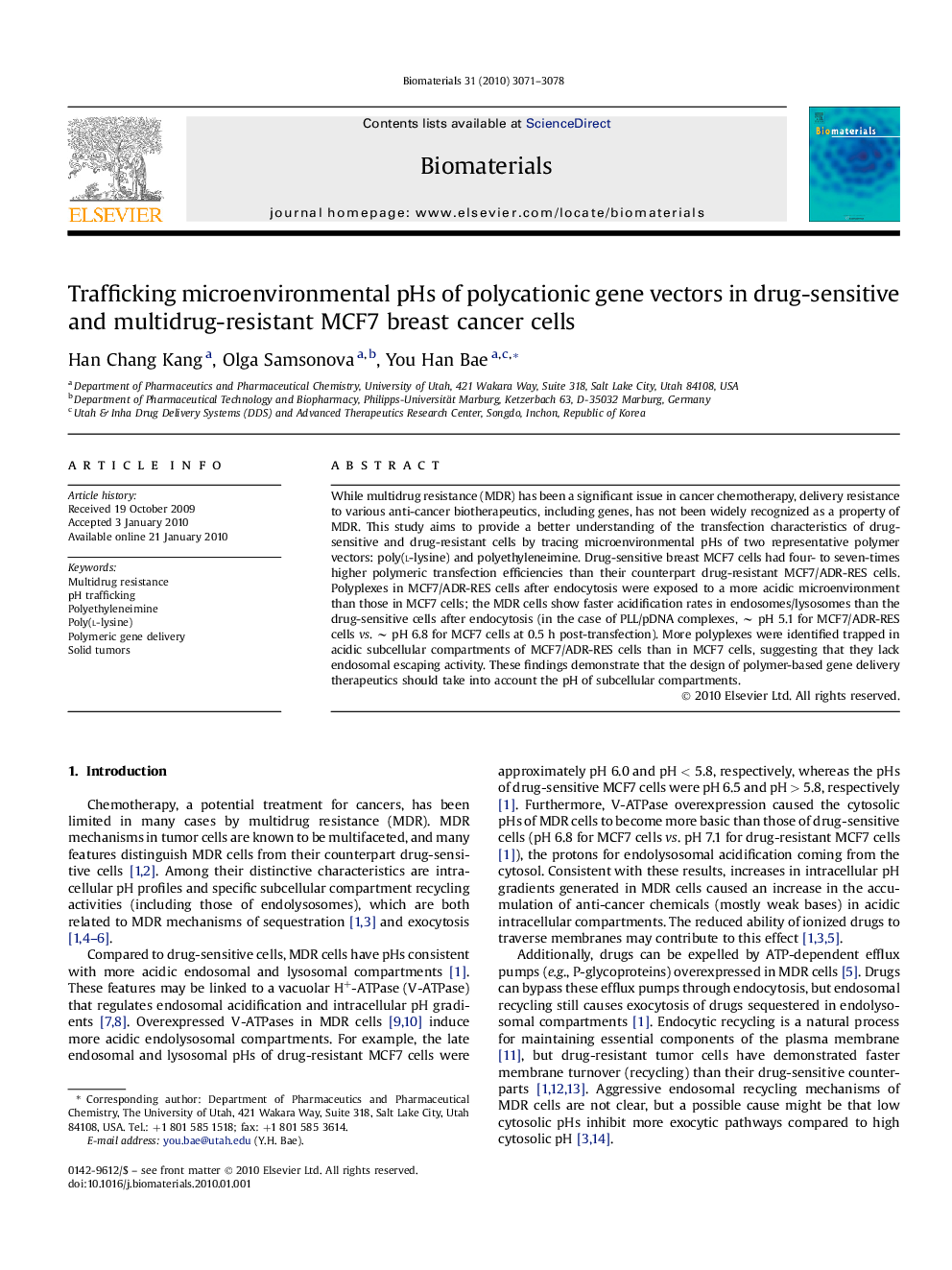| Article ID | Journal | Published Year | Pages | File Type |
|---|---|---|---|---|
| 9240 | Biomaterials | 2010 | 8 Pages |
While multidrug resistance (MDR) has been a significant issue in cancer chemotherapy, delivery resistance to various anti-cancer biotherapeutics, including genes, has not been widely recognized as a property of MDR. This study aims to provide a better understanding of the transfection characteristics of drug-sensitive and drug-resistant cells by tracing microenvironmental pHs of two representative polymer vectors: poly(l-lysine) and polyethyleneimine. Drug-sensitive breast MCF7 cells had four- to seven-times higher polymeric transfection efficiencies than their counterpart drug-resistant MCF7/ADR-RES cells. Polyplexes in MCF7/ADR-RES cells after endocytosis were exposed to a more acidic microenvironment than those in MCF7 cells; the MDR cells show faster acidification rates in endosomes/lysosomes than the drug-sensitive cells after endocytosis (in the case of PLL/pDNA complexes, ∼ pH 5.1 for MCF7/ADR-RES cells vs. ∼ pH 6.8 for MCF7 cells at 0.5 h post-transfection). More polyplexes were identified trapped in acidic subcellular compartments of MCF7/ADR-RES cells than in MCF7 cells, suggesting that they lack endosomal escaping activity. These findings demonstrate that the design of polymer-based gene delivery therapeutics should take into account the pH of subcellular compartments.
